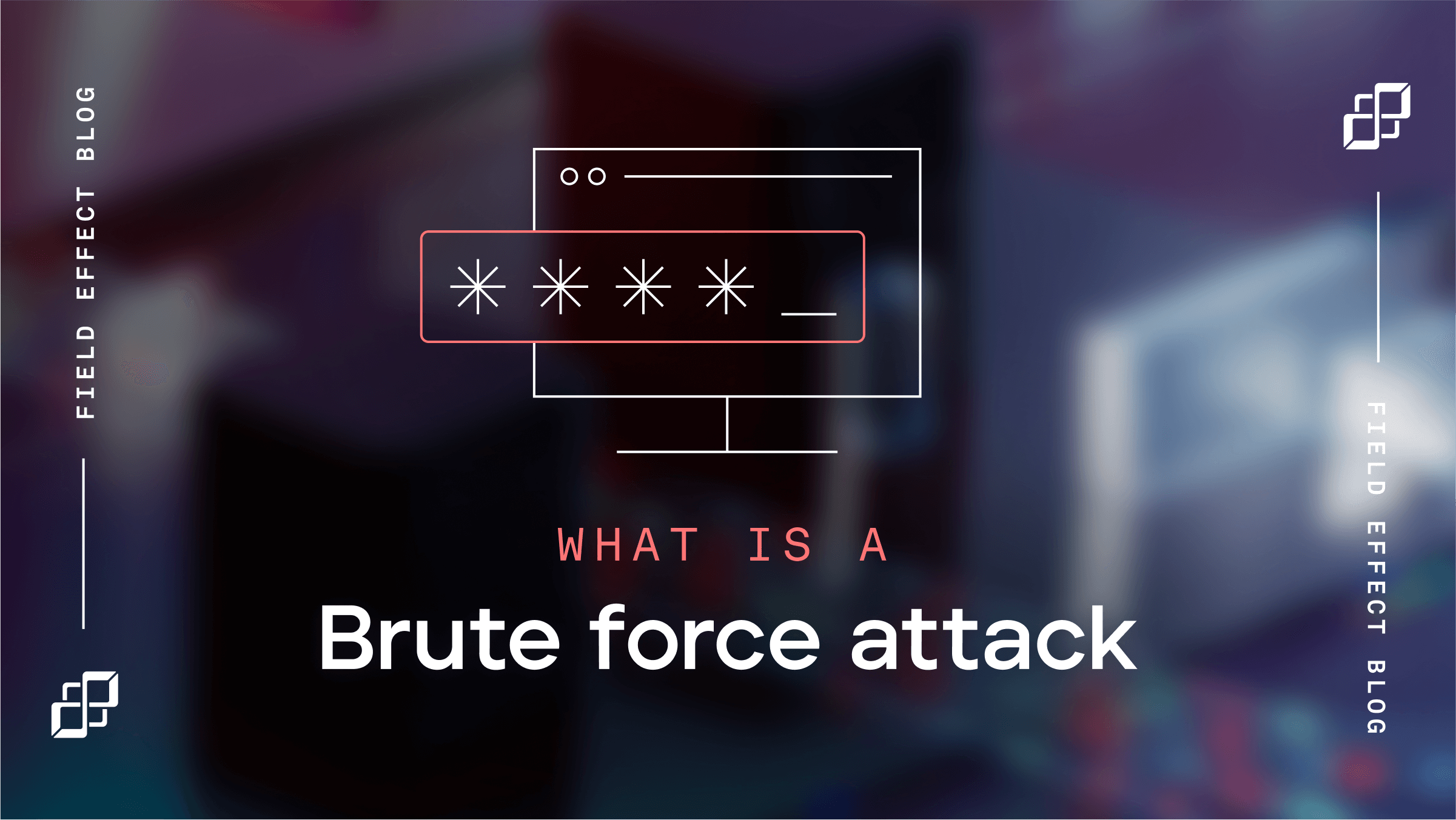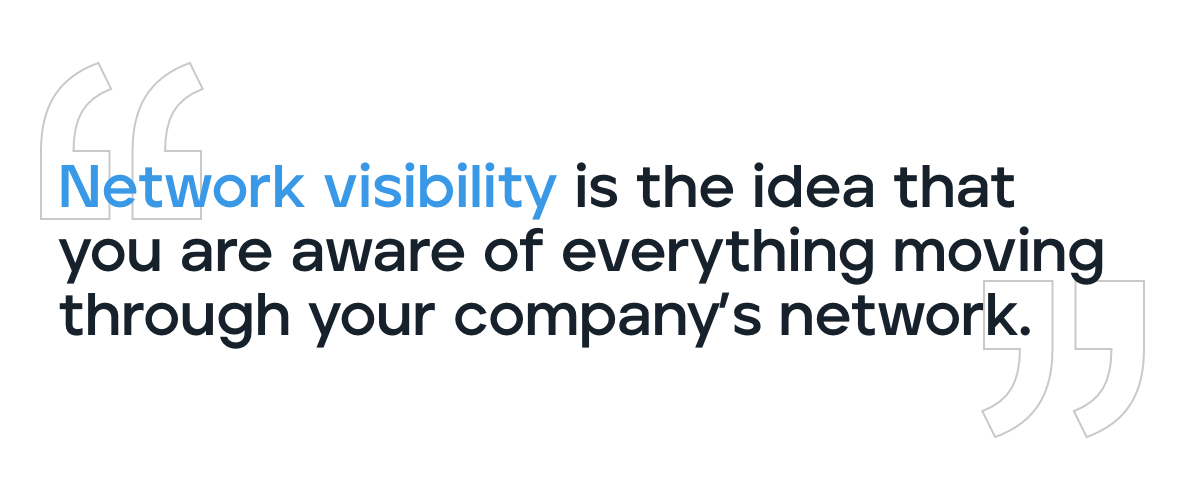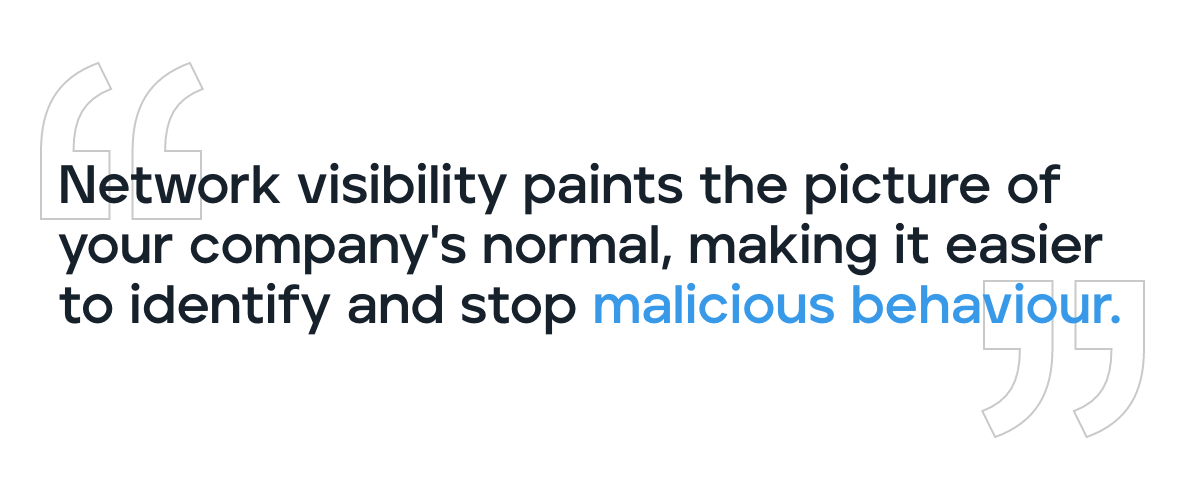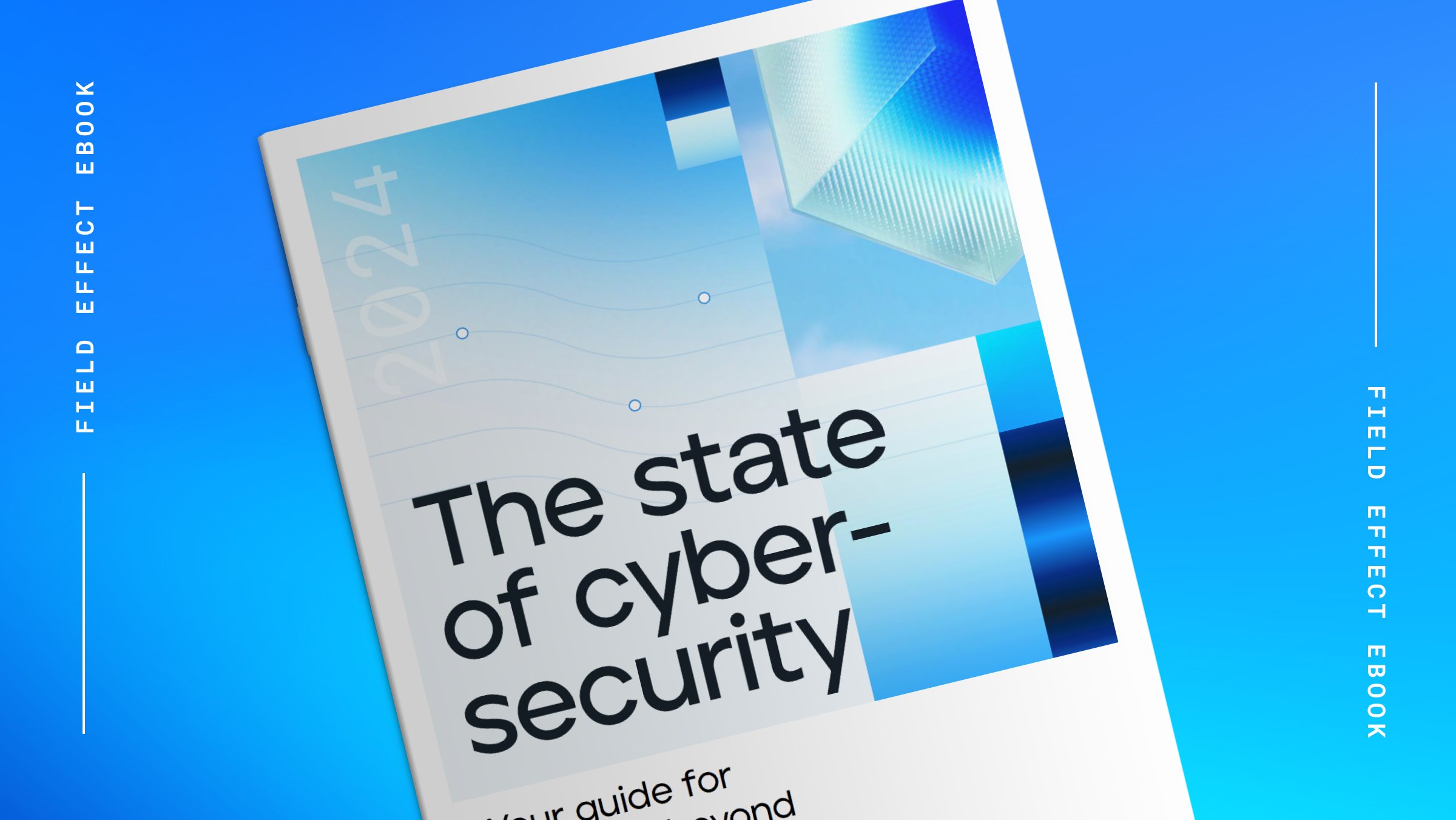
Blog Post
May 28, 2024 | Cybersecurity education
By Katie Yahnke
With contributions from Andrew Hunter and Eric McDonald.
There’s a growing belief within cybersecurity that the network is dead.
On the contrary, the network has never been more important in properly protecting your business.
Yet there’s a reason that belief is so widespread: things have changed quickly. There’s been substantial growth in connectivity. Between VPNs and other tools, mobile devices, and Internet of Things (IoT) technology, networks don’t look the same as they did a decade ago. Consider also the increased connectivity from third-party partnerships and supply chains.
Just because the network has changed doesn’t mean it’s futile. There’s a saying among IT and cybersecurity pros: the network doesn’t lie.
If an attacker finds a way inside your network, they’ll try to lay low to avoid detection. However, uploading attack tools or sending data from inside a network out generates activity that could expose their presence or, at the very least, raise suspicions. Attackers know that the network could give them away, so they take the time to muddy their trail as best they can.
Choosing the Right Cybersecurity Solution eBook recaps the most popular security tools on the market, their benefits and limitations, and how to choose the right one for your business.
Unfortunately, it takes time and money to understand your network. Even defining what’s “normal” for your network is a challenge, let alone being able to distinguish between regular and irregular behavior.
Good news for the attacker, not so much for the victim.
So how can an organization protect something so vast and ever-changing? There are several methods, but network visibility is a great place to start.
Network visibility is the idea that you are aware of everything moving through your company's network, and defines what's considered normal activity.
Network visibility is integral to cyber security, even helping you achieve the first step in cyber situational awareness (that is, knowing your network).
Network visibility makes it possible to:
By defining what is standard on a network, you can spot user and system behaviors that don’t match—a technique often called anomaly-based threat detection.

Clear network visibility is integral to protecting your organization. You need to actively look for security gaps and vulnerabilities, cyberattacks, and performance issues to find them.
If you don’t find them, you can’t fix them.
Unfortunately, not enough businesses have sufficient network visibility. There are several reasons why—they may not understand its importance, or maybe they lack the tools and resources to get started.
One study found that only 32% of small businesses in the UK monitor user activity on their networks (and therefore have some degree of visibility). The good news is network visibility is increasingly common in mid-sized and large organizations.
Dive into the past, present, and future of cybersecurity with The State of Cybersecurity eBook.
The tricky goal of network visibility is to strike a balance between too much and too little. Given how much data can be present on even the smallest network, it isn’t realistic to review and analyze everything that happens.
Too much data can be noisy, overwhelming, and impossible to parse through, but not enough, and you miss critical events. This is where tools and automation come in.
Before we cover how to get the right level of network visibility, we should dive deeper into the benefits.
Network visibility paints the picture of your normal and makes it much easier to identify and stop malicious behavior as it happens. For example, an abnormal volume of files moving out of the network (particularly at strange times of the day) could signify an insider threat.

Many newer technologies—including IoT devices such as connected speakers, thermostats, and even some appliances—can’t be protected in the same way as a laptop or phone is. IoT devices generally don’t have the technical capacity to run endpoint security tools or software.
However, by monitoring these devices at the network level, you can detect threats or vulnerabilities and improve your defense.
As an example, network visibility could allow you to detect when an IoT device starts sending volumes of data out of your network, which could indicate a potential cyber attack. You could also see when a new device connects to your network which may be important to note, even if it’s not immediately cause for concern.
In addition to reducing the likelihood of an attack, network visibility is also useful while investigating and remediating attacks. Improved monitoring accelerates how quickly you can identify and contain threats, ultimately reducing the risk and impact of an incident.
Similarly, good network visibility can expose vulnerabilities and minimize blind spots across your whole network. This is more critical than ever as organizations continuously adopt new applications, software, and tools—all of which can create new vulnerabilities.
In fact, a recent study found that at least 85% of commercial applications have one or more critical vulnerabilities that increase cybersecurity risk and the potential for compromise. With a more in-depth view of your network, you can identify vulnerabilities, such as unpatched or legacy operating systems, and resolve them before they are exploited.
With corporate networks expanding to include third parties, partners, and the supply chain, knowing and resolving these vulnerabilities is crucial. In one study, nearly 90% of cybersecurity leaders had concerns about the third parties in their ecosystem. They believed that the smaller businesses they work with "represent most vulnerabilities and are increasingly a target of cyberattacks.”
Their concerns seem to be warranted. The same study found that, in the last two years, 40% of respondents experienced a cyberattack within their digital ecosystem that negatively affected their organization.
Several frameworks, including the well-known NIST Cybersecurity Framework, recommend monitoring and visibility as a critical part of any cybersecurity plan.
NIST released a report titled Security and Privacy Controls for Information Systems and Organizations. Among the many other controls listed in this report, NIST recommends that organizations monitor their systems to detect:
1. Attacks and indicators of potential attacks
2. Unauthorized local, network, and remote connections
NIST says organizations can do this by using internal monitoring capabilities or deploying monitoring devices across their system to analyze and detect abnormal events.
The Canadian Centre for Cyber Security makes the same recommendations in Annex 3A of the Security Control Catalogue.
Networks have grown in scale and complexity, especially recently with the quick rise in remote work, which can lead to configuration problems and network performance issues.
So beyond simply being a means to improve cybersecurity, network visibility makes it much easier to identify traffic bottlenecks, bandwidth challenges, or unresponsive hosts, minimize latency, and optimize network performance.
Whether you’re operating a small business or mid-sized enterprise, using automated tools to gather and analyze critical data is an easy and cost-effective way to gain network visibility. Networks create a lot of data, and trying to sort through it all manually is inefficient. Using a tool takes out the tedium.

However, there are many threat monitoring solutions on the market, each with different features and capabilities.
Many cybersecurity solutions rely on text-based logs for information and analysis—but that approach has its flaws. Logs are simply text-based records generated by a program as it operates and don’t provide the detail needed to understand or analyze what’s happening on your network. Also, threat actors can alter or fully delete logs to hide their malicious activity.
To achieve better network visibility, look for a cybersecurity solution that goes beyond logging for a deeper understanding of what’s happening on your network.
That said, network visibility is more than just collecting huge volumes of data and storing them in a central location just in case. Greater visibility also depends on intelligent threat and vulnerability detection and analysis, which brings us to step two.
To gain network visibility, you need a solution that recognizes important trends, separates the unusual from the routine, and then delivers the results to you in a clear, digestible format.
Unfortunately, many threat monitoring and detection tools struggle with this. They fail to eliminate false positives, alerts that either incorrectly indicate the existence of a cyber threat or that classify benign activity as suspicious. False positives limit or blur your network visibility, taking attention away from the areas that need it, and may lead to alert fatigue.
Cybersecurity alert fatigue can set in when people are constantly exposed to threat alerts, often by email or push notifications, and over time become desensitized to them.
On average, each alert takes at least ten minutes to investigate. That adds up fast when you're receiving dozens, even hundreds, of alerts per day. According to one report, 75% of businesses said they spend as much time addressing false positives as they do genuine incidents.
Think about alert fatigue this way. No one wants to get an alert from their front door security camera every time a neighbor walks by or a gust of wind blows tree branches within view.
The security camera would send you notifications constantly, and you’d feel inclined to ignore the alerts or turn the feature off. The same concept applies to cybersecurity tools, which brings us to the third important step in achieving network visibility.
Network visibility requires a true understanding of what is wrong—vulnerabilities, cyberattacks, and other issues—and how to resolve it. How the findings are communicated to you is integral. What good is analyzing the data if the main message gets lost in translation?
Clear, concise language is vital for knowing what next steps to take after receiving an alert. You know something suspicious or malicious is happening on your network—what should you do to address it?
Not every business has access to a fully staffed team of experienced cybersecurity professionals. Tools that deliver alerts without context into what’s happening and why aren’t practical. It’s not always clear what action to take if an alert says something like:
Incomplete login session at 2:43 am on 1.2.3.4.
Businesses need more context and insights into what’s happening on their network and what they need to do about it. Something like this would be far more helpful and provide greater understanding:
There is a sustained brute-force attack by thousands of remote IPs against the Remote Desktop Service located on DESKTOP-PC10 (10.20.32.12). It is advisable to firewall this system from the Internet and implement a VPN-based solution for remote access. Keep reading for more detailed steps or contact our experts for further assistance.
Tools that limit noise during analysis and add context for alerts help you save time, avoid burnout, and understand your network.
Gaining network visibility can be relatively easy—assuming you have a cybersecurity solution with the right features and capabilities.
Networks are complex because they hold a massive volume and variety of data. But that complexity is worsened because networks are continuously in flux—adding and removing machines, changing configurations, and more. The result is a noisy environment that traditional cybersecurity tools can’t handle.
In response, many cybersecurity vendors say that the average organization needs several tools to cover a company's cybersecurity needs. There’s one for handling traffic, another for mobile devices, another for servers—the list goes on. But that’s not exactly true. There are cybersecurity solutions on the market with the scalability and power needed to protect dynamic networks.
Field Effect MDR is a holistic cybersecurity solution covering your network, as well as your endpoints and cloud-based services. It combines best-in-class network telemetry analysis with 24/7 support from cyber security experts for the world’s most in-depth network visibility.
Get the network visibility you need to keep your company secure. Reach out to one of our experts today to learn more about Field Effect MDR.


